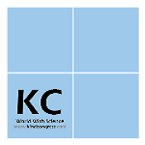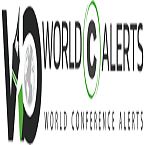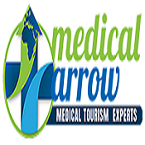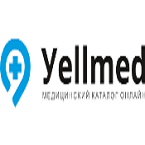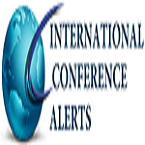Session & Tracks
Session 1: Infectious diseases: are illnesses caused by pathogenic microorganisms such as bacteria, viruses, parasites, or fungi that can be transmitted from one person to another either directly or indirectly (vector-borne). An infection is the infiltration of disease-causing pathogens into an organism's bodily tissues, their multiplication, and the host tissues' reaction to the infectious agents and the toxins they create. An infectious disease, often known as a transmissible or communicable disease, is a condition caused by an infection. Infections are caused by a variety of pathogens, the most common of which being bacteria and viruses. The immune system of hosts can help them fight diseases.
Related Associations: Infection Prevention Society, American Society of Microbiology, The Japanese Association for Infectious Diseases, Infectious Diseases Society of America, Korean Association of Infection Disease Prevention, Canadian Society for Immunology.
Session 2: Gastrointestinal and urinary tract infections: are common ailments affecting the digestive and urinary systems, respectively. Gastrointestinal infections, often caused by bacteria or viruses, lead to symptoms like diarrhoea, nausea, and abdominal pain. Urinary tract infections (UTIs), typically caused by bacteria such as Escherichia coli, result in symptoms such as frequent urination, burning sensation, and lower abdominal discomfort. Prompt diagnosis and treatment with antibiotics are essential in managing these infections and preventing complications.
Related Associations: British Society of Parasitology, Surgical Infection Society, The Japanese Association for Infectious Diseases, Infectious Diseases Society of America, American Society of Infection Prevention, Asia Pacific Society of Infection Control.
Session 3: Sexually transmitted diseases (STDs): Infections transmitted through sexual contact. Common STDs include chlamydia, gonorrhea, syphilis, and HIV/AIDS. These diseases can have serious health consequences if not diagnosed and treated early. Prevention measures such as practicing safe sex, using condoms, and getting tested regularly are crucial in controlling the spread of STDs and promoting sexual health. Early detection and treatment are essential for reducing the risk of complications and preventing further transmission.
Related Associations: Australasian Society for Infectious Diseases, Chinese Society for Immunology, Korean Association of Infection Disease Prevention, Canadian Society for Immunology, American Society of Infection Prevention, Asia Pacific Society of Infection Control.
Session 4: Ebola virus disease (EVD),: also known as Ebola haemorrhagic fever in humans and other primates, is a serious, frequently fatal sickness. Ebola Virus Disease (EVD) is a devastating disease that affects both humans and nonhuman primates. After becoming infected with the virus, symptoms often appear two to three weeks later. Fever, sore throat, muscle soreness, and headaches are generally the first signs. Vomiting, diarrhoea, dermatitis, and reduced liver and renal function are common side effects, and some people bleed internally and externally as a result. The disease kills between 25% and 90% of people affected, with an average death rate of 50%. The most common cause of death is shock from fluid loss, which happens six to 16 days after the first symptoms show.
Zika virus diseases : is caused by a virus that is mostly transmitted by Aedes mosquitoes that bite during the day. Fever, rash, conjunctivitis, muscle and joint discomfort, malaise, and headache are all common symptoms. The symptoms usually persist 2–7 days.
Related Associations: Healthcare Infection Society, European Society of Clinical Microbiology and Infectious Diseases, American Society of Infection Prevention, Asia Pacific Society of Infection Control, International AIDS Society, Pediatric Infectious Disease Society of Thailand.
Session 5: Epidemiology of Infectious Diseases: Is the study of patterns, causes, and effects of health and disease conditions in defined populations. It encompasses various methods to identify factors impacting public health, such as disease outbreaks, risk factors, and preventive measures. By analysing data, epidemiologists contribute to understanding disease transmission, informing healthcare policies, and improving public health interventions, ultimately aiming to enhance community .
Related Associations: Infection Prevention Society, American Society of Microbiology, The Japanese Association for Infectious Diseases, Infectious Diseases Society of America, Korean Association of Infection Disease Prevention, Canadian Society for Immunology.
Session 6: Emerging and Re-Emerging Infections : When disease is caused by an organism that is newly identified and not known previously to infect humans or has changed in susceptibility to an anti-infectious drug, it is commonly called an emerging infectious disease, or simply an emerging infection. The RNA viruses that cause seasonal human epidemics of influenza are highly unstable genetically and mutate frequently during replication. Mutation, or genetic drift, results in susceptibility of individuals regardless of their exposure to the viruses before drift, requiring annual antigenic modifications in seasonal influenza vaccines to ensure protection. The short incubation period, and the mild illness caused by the majority of infections, especially among school aged children, result in rapid transmission potential that leads to seasonal influenza epidemics.
Related Associations: Infection Prevention Society, The Japanese Association for Infectious Diseases, Healthcare Infection Society, European Society of Clinical Microbiology and Infectious Diseases, Surgical Infection Society, European Association of Infection Control.
Session 7:Neuro infections :are those that affect the nervous system, including the brain and spinal cord. They can be caused by viruses, bacteria, fungi, or parasites and may result in a range of symptoms such as headache, fever, confusion, seizures, and neurological deficits. Common Neuro infections include meningitis, encephalitis, and brain abscesses. Prompt diagnosis and treatment are essential to prevent serious complications and long-term neurological damage. Management often involves a combination of antimicrobial therapy, supportive care, and, in severe cases, neurosurgical intervention. Early recognition and appropriate treatment are crucial for optimal outcomes in neuro infection cases.
Related Associations: Infection Prevention Society, The Japanese Association for Infectious Diseases, Healthcare Infection Society, European Society of Clinical Microbiology and Infectious Diseases, Surgical Infection Society, European Association of Infection Control.
Session 8: Bloodborne infectious diseases: such as Hepatitis B, Hepatitis C, and HIV, spread through exposure to contaminated blood and body fluids. Effective prevention includes using protective gear, proper disposal of sharps, and practicing rigorous hand hygiene. Vaccination for Hepatitis B is crucial, while ongoing antiviral treatments help manage chronic infections. Public health efforts focus on early screening, education, and safe practices to reduce transmission and protect at-risk populations. By enhancing awareness and implementing preventive measures, we can mitigate the impact of these serious infections.
Related Associations : These associations work to develop global guidelines, promote vaccination programs, and support research into new treatments. They also provide resources and training for healthcare professionals to prevent and manage infections.
Session 9:Diagnosing infectious diseases: The diagnosing of a microbial infection begins with associate assessment of clinical and medical specialty options, resulting in the formulation of a diagnostic hypothesis. Anatomic localization of the infection with the help of physical and radiologic is typically enclosed. This clinical diagnosing suggests variety of doable etiologic agents supporte data of infectious syndromes and their courses. A mixture of science and art on the part of each the practical and laboratory employee is required. The lab technician should choose the acceptable tests and specimens to be processed and, wherever acceptable, counsel the suspected etiologic agents to the laboratory. The laboratory findings of the laboratory examinations. The simplest results square measure obtained once communication between the practical and laboratory is outside.
Related Associations: Australasian Society for Infectious Diseases, Chinese Society for Immunology, Korean Association of Infection Disease Prevention, Canadian Society for Immunology, American SocietyofInfectionPrevention, Asia Pacific Society of Infection Control.
Session 10:Fungal Infectious Diseases : Infections are common throughout abundant of the nature. In humans, plant infections occur once and offensive plant life takes over a neighbourhood of the body and is simply too abundant for the system to handle. Fungi will board the air, soil, water, and plants. There also are some fungi that live naturally within the physical body. Like several microbes, there are useful fungi and harmful fungi. Once harmful fungi invade the body, they will be troublesome to kill, as they will survive within the atmosphere and re-infect the person making an attempt to induce higher.
Related Associations: British Society of Parasitology, Surgical Infection Society, The Japanese Association for Infectious Diseases, Infectious Diseases Society of America, American Society of Infection Prevention, Asia Pacific Society of Infection Control.
Session 11: Bacterial Infectious Diseases: A bacterial microorganism infection could be a proliferation of a harmful strain of bacterium on or within the body. Bacterium will infect any space of the body. Pneumonia, meningitis, and sickness square measure simply some sicknesses which will be caused by harmful bacterium. Bacteria are available 3 basic shapes: rod-shaped (bacilli), spherical (cocci), or volute (spirilla). Bacterium may additionally be classified as gram-positive or gram-negative. Gram-positive bacteria have a thick semipermeable membrane whereas gram-negative bacteria don't. Gram staining, microorganism culture with antibiotic sensitivity determination, and different tests square measure want to determine microorganism strains and facilitate confirm the suitable course of treatment.
Related Associations: Australasian Society for Infectious Diseases, Chinese Society for Immunology, Korean Association of Infection Disease Prevention, Canadian Society for Immunology, American Society of Infection Prevention, Asia Pacific Society of Infection Control.
Session 12:Food and waterborne Infections: Consuming contaminated foods or beverages causes foodborne diseases. The start of symptoms might occur inside minutes to weeks and often occur as flu-like symptoms. Symptoms of infected person area unit nausea, vomiting, fever because the symptoms area unit flu-like many of us might not acknowledge that the illness is caused by microorganism or different microorganism in food. Foodborne malady will be prevented by correct preparation or by process the food to kill the pathogens.
Related Associations: Healthcare Infection Society, European Society of Clinical Microbiology and Infectious Diseases, American Society of Infection Prevention, Asia Pacific Society of Infection Control, International AIDS Society, Pediatric Infectious Disease Society of Thailand.
Session 13:Pulmonary Infection Therapy: nearly not possible to avoid viruses and bacteria; however some risk factors increase your maximum chances of developing acute respiratory infection. Bacteria and its spores from the Respiratory infection may spread to your bloodstream. This may result in hazardously changes in blood pressure, septic shock, and in some cases, organ failure. The immune system of children, Infants and older adults are more prone to being affected by viruses. Simple technical methods like proper hand washing and covering face while coughing or sneezing might prevent the spread of upper respiratory infections. Epiglottitis is an upper respiratory infection in children that may have a more sudden onset of sore throat, feeling of a lump within the throat, muffled voice, and dry cough, terribly painful swallowing, and drooling.
Related Associations: Infection Prevention Society, American Society of Microbiology, The Japanese Association for Infectious Diseases, Infectious Diseases Society of America, Korean Association of Infection Disease Prevention, Canadian Society for Immunology.
Session 14 :COVID-19Infection: caused by the SARS-CoV-2 virus, emerged in late 2019, rapidly escalating into a global pandemic. Characterized by symptoms ranging from mild respiratory issues to severe pneumonia, the virus spreads primarily through respiratory droplets. Key prevention measures include vaccination, wearing masks, maintaining social distance, and practicing good hand hygiene. The pandemic has significantly impacted global health systems, economies, and daily life, highlighting the critical importance of robust infection control practices and international cooperation in public health.
Related Associations: Healthcare Infection Society, European Society of Clinical Microbiology and Infectious Diseases, American Society of Infection Prevention, Asia Pacific Society of Infection Control, International AIDS Society, Pediatric Infectious Disease Society of Thailand.
Session 15: Pulmonary and Chest Infections: Infection of the lungs or airways is understood as chest infection. The most forms of chest infection square measure respiratory disorder and respiratory disorder. Most viruses cause increase in respiratory disorder, whereas most bacterium cause increase in development of respiratory disorder. Once associate in nursing infected person coughs or sneezes infections square measures sometimes unfold. Virus or bacterium fluid droplets into the air, wherever they'll be inhaled in by others cause infections.
Related Associations: Infection Prevention Society, American Society of Microbiology, The Japanese Association for Infectious Diseases, Infectious Diseases Society of America, Korean Association of Infection Disease Prevention, Canadian Society for Immunology
Session 16 : Parasitic Infectious Diseases: Parasitic infections are caused because of protozoa and helminths are answerable for substantial morbidity and mortality worldwide. They're life in Central and South America, Africa, and Asia. They're abundant less common in Australia, Canada, Europe, Japan, New Island, and the US. By far, the best impact is on residents of impoverished tropical areas with poor sanitation, however parasitic infections are encountered in developed countries among immigrants and travellers coming back from endemic regions and, infrequently, even among residents UN agency haven't travelled, notably those with AIDS or different conditions that cause immunological disorder.
Related Associations: British Society of Parasitology, Surgical Infection Society, The Japanese Association for Infectious Diseases, Infectious Diseases Society of America, American Society of Infection Prevention, Asia Pacific Society of Infection Control.
Session 17 : Pediatric Infections: Infection from mother to fetus, in just born babies and children is growing danger. The death rates are increasing due to infections. The scientific studies, research, education on pediatric infections need to be known. The epidemiological features of congenital and neonatal diseases due to bacterial, viral, vector borne infections despite become more threat. Infection Congress 2017 is going to be platform to know epidemiological and clinical studies. Conference will be organized with the theme “Exploring recent outbreaks, advances & technologies in treatment & research of Infectious Diseases.
Related Associations: Healthcare Infection Society, European Society of Clinical Microbiology and Infectious Diseases, American Society of Infection Prevention, Asia Pacific Society of Infection Control, International AIDS Society, Pediatric Infectious Disease Society of Thailand.
Market Analysis
Infectious Diseases Market Analysis and Size
According to the Australian Institute of Health and Welfare, the NNDSS received approximately 593,000 cases of notifiable diseases in 2019. In addition, the almost 447,000 hospitalizations for communicable diseases in 2017–18, 89 percent were caused by non–notifiable infections. The hospitalisation rate for non-notifiable communicable diseases peaked during 2000-01 and 2017-18 at 15.3 per 1,000 people in 2016-17. (nearly 400,000 hospital separations).
Market Research analyses that the infectious disease market which was USD 18.34 billion in 2021, would rocket up to USD 28.73 billion by 2029, and is expected to undergo a CAGR of 5.77% during the forecast period 2022 to 2029. In addition to the market insights such as market value, growth rate, market segments, geographical coverage, market players, and market scenario, the market report curated by the Market Research team also includes in-depth expert analysis, patient epidemiology, pipeline analysis, pricing analysis, and regulatory framework.
Infectious Disease Market Overview:
The global infectious disease diagnostic market was valued at $23,321.99 million in 2020, and is estimated to reach $39,941.37 million by 2030, growing at a CAGR of 6.8% from 2021 to 2030. Infectious disease diagnosis is defined as a laboratory test, which is executed with the help of skilled technicians and physicians to diagnose infectious diseases. It is a diagnostic procedure in which the causative organism of an infectious disease is characterized and identified. The sample of urine, blood, mucus, or other body fluids are analyzed to provide information about the causative organism by the use of various diagnosis procedure and instruments.
The COVID-19 outbreak is anticipated to have a positive impact on the growth of the global infectious disease diagnostic market. The COVID-19 pandemic has stressed the healthcare systems in the world and increased the need for the development of diagnostic instruments & diagnostic service centers. Increase in number of COVID-19 cases surged the demand for real time polymerase chain reaction (RT-PCR) test to detect COVID-19.
Growth of the global infectious disease diagnostic market is majorly driven by increase in prevalence of infectious disease such as hepatitis, influenza, COVID-19, & human immuno deficiency virus (HIV); rise in demand for point-of-care diagnostic test; increase in funding from private & government organizations for diagnostic service centers; and advancements in technologies in the field of infectious disease diagnostics. According to the Centers for Disease Control and Prevention (CDC), in 2018, it was reported that approximately 1.7 million infections and 99,000 associated deaths occur every year in American hospitals. Furthermore, surge in demand for point-of-care testing is anticipated to fuel the growth of the infection disease diagnostic market. For instance, in March 2020, Abbott, a global healthcare company, announced the launch of Abbott ID NOW COVID-19 test, which is a molecular point-of-care test used to detect COVID-19 in as little as 5 minutes. In addition, rise in geriatric population fuels the market growth, owing to the fact that aged individuals are more susceptible to infectious diseases. According to the U.S. Food and Drug Administration (FDA), in 2020, it was reported that around 300,000 individuals aged 50 and above are diagnosed with pneumococcal pneumonia, every year. In May 2021, Neuberg Diagnostic, a leading company that offers best-in-class laboratories, launched the clinical laboratory's operation in the U.S. to offer genomic and molecular testing on new generation sequencing technology.
Infectious Disease Diagnostic Market by Technology:
North America garnered the major share in the infectious disease diagnostic market in 2020, and is expected to continue to dominate during the forecast period, owing to rise in prevalence of infectious disease, presence of key players, development of the healthcare sector, presence of national clinical laboratories, and advancement in technology for diagnostic instruments in the region. However, Asia-Pacific is expected to register the highest CAGR of 8.5% from 2021 to 2030, owing to increase in prevalence of infectious diseases, rise in demand for early diagnosis, development of healthcare infrastructure, and technological advancement in diagnostic testing.
The key players operating in the global infectious disease diagnostic market include Abbott Laboratories, Becton Dickinson and Company, BioMerieus SA, Bio-Rad Laboratories, Danaher Corporation, F Hoffman-La Roche, Hologic Inc., Luminex Corporation, Qiagen Inc., and Thermo Fisher Scientific Inc.
Past Conference Report
Infection Congress 2024
We are thankful to all our wonderful Speakers, Conference Attendees, Students and Associations for making Infection Congress 2024 Conference the best ever!
11th International Congress on Infectious Diseases was held on February22-23, 2024 Zurich, Switerland.Webinar based on the theme Exploring the Scientific and Technological Methods to Prevent & Control Infectious Diseases for World Peace. Benevolent response and active participation was received from the Organizing Committee Members along with Scientists, Researchers, Students and leaders from various fields of Infectious Diseases, who made this event an outstanding success.
Conference Series LLC Ltd expresses its gratitude to all the participants who made this event grad success.
The meeting reflected various sessions, in which discussions were held on the following major scientific tracks:
-
Infectious Diseases
-
Epidemiology of Infectious Diseases
-
Diagnosis of Infectious Diseases
-
Infection Prevention, Control and Treatment
-
Emerging and Re-Emerging Infectious Diseases
-
Antimicrobial Agents
-
STD and Contact Diseases
-
Bacterial Infectious Diseases
-
Fungal Infectious Diseases
-
Neglected & Tropical Infectious diseases
-
Parasitic Infectious Diseases
-
Viral Infections
-
Recent Outbreaks and their Control
-
Pediatric Infectious Diseases
-
Food and Water Borne Infections
Conference Series LLC Ltd offers its heart felt appreciation to keynote speakers, dexterous of field, various outside experts, company representatives and is obliged to other eminent personalities who interweaved with the organisation and supported the conference in every aspect, without which the conference would not have been possible.
Your rejoinder is our inspiration; keeping this motto in mind and being witnessed the triumph of Infection Congress 2024, Conference Series LLC Ltd would like to announce the commencement of the “12th International Congress on Infectious Diseases” on March 17-18, 2025 in Berlin, Germany. We welcome all the eminent researchers, students and delegate participants to take part in this upcoming conference to witness invaluable scientific discussions and contribute to the future innovations in the field of Infectious Diseases. Mark your calendars for the upcoming Conference; we are hoping to see you soon!
Let us meet again @ Infection Congress 2025
For More details visit: https://infectioncongress.infectiousconferences.com/
Past Reports Gallery





